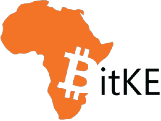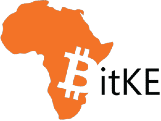Nigeria is stepping boldly into the digital finance arena – but not without complexity. With the recent launch of cNGN, Nigeria’s first regulated Naira-backed stablecoin, a fresh chapter is being written in the country’s crypto narrative. But how does it differ from the eNaira, the Central Bank of Nigeria’s (CBN) earlier attempt at a digital currency? And what’s the future potential of cNGN in a country where crypto adoption continues to grow despite regulatory hurdles?
Let’s dive in.
What Is cNGN?
Launched in February 2025, cNGN (crypto Naira) is a 1:1 Naira-pegged stablecoin created by WrappedCBDC Ltd., in collaboration with Convexity, Interstellar, and AlphaGeeks Tech. It’s supervised by the Nigerian SEC under its Regulatory Incubation Program.
What sets cNGN apart is its multi-chain availability – live on networks like Bantu, Base, Binance Smart Chain, Ethereum, Polygon, and more – and its listings on licensed exchanges like Busha and Quidax. Fully backed by reserves in cash, government bonds, and treasury bills, cNGN is designed for real-world use: remittances, DeFi, cross-border payments, and digital commerce.
It’s essentially a bridge between Nigeria’s traditional financial infrastructure and the global blockchain ecosystem.
How Is It Different from the eNaira?
At a glance, both cNGN and eNaira represent digital versions of the Naira – but under the hood, they couldn’t be more different.
The eNaira, launched in 2021, is a central bank digital currency (CBDC) issued directly by the CBN. It runs on a private, permissioned blockchain, emphasizing monetary policy control and financial surveillance.
In contrast, cNGN is a decentralized, privately-issued stablecoin with market-driven incentives and public blockchain transparency. It’s more agile, programmable, and designed with user experience in mind.
“The eNaira focuses on macroeconomic objectives, while cNGN is about empowering users, businesses, and freelancers with seamless and global digital transactions,” says Olayinka Omoniyi, Sales & Marketing Lead at Convexity.
Why cNGN Could Be a Game-Changer
From a crypto standpoint, cNGN is a much-needed local currency on-chain. It opens the door to decentralized trading, liquidity pools, and lending protocols—all without relying on USD-pegged stablecoins like USDT or USDC.
But it’s not just for DeFi degens.
- Freelancers can receive payments in Naira directly.
- Businesses can settle payments instantly.
- Remittance senders can avoid high transfer fees.
- Fintechs get a low-cost, transparent on/off-ramp to crypto.
“Imagine paying ₦150–₦500 per transfer instead of ₦5,000+ in network fees,” Omoniyi points out. “That’s a big deal for everyday Nigerians.”
Even better? It supports programmable finance – think smart contract-powered escrow, milestone-based payments, and streaming salaries for gig workers.
Why Isn’t Everyone Using It Yet?
Despite its promise, cNGN is still early in the adoption curve.
With just 121.3 million tokens in circulation and only 127 wallet addresses, it’s clear that awareness is the biggest hurdle. Many Nigerians don’t even know cNGN exists – thanks in part to the eNaira’s underwhelming reception.
There’s also the issue of Naira volatility. Though cNGN is stable against the local currency, the Naira itself has depreciated heavily, from ₦460 to ₦1,500 per dollar since 2022. This limits its appeal as a savings vehicle, though it remains attractive for transactions and cross-border use cases.
Infrastructure is another challenge. While platforms like Busha and Quidax support cNGN, mainstream wallets, merchants, and fintechs haven’t fully integrated it yet.
“We need banks, Web3 startups, and mobile money platforms to build on top of cNGN,” Omoniyi says. “Once businesses integrate it, consumers will follow.”
What Needs to Happen Next?
For cNGN to fulfill its potential, a few strategic moves are essential:
1.) Education
Workshops, hackathons, and developer outreach are underway to raise awareness – especially among the banked and underbanked. Emphasizing its 1:1 Naira peg, ease of use, and low fees is crucial.
2.) Ecosystem Partnerships
Imagine topping up your OPay wallet with cNGN, or donating to charities directly via blockchain. Embedding cNGN into everyday platforms will make it tangible for users.
3.) Developer Incentives
Smart contracts could unlock a wave of apps – escrow platforms, crowdfunding tools, and refund automation – all powered by cNGN.
4.) Regulatory Expansion
The SEC’s incubation is a strong start. Scaling up requires broader support from exchanges, wallet providers, and even government-backed services.
A Digital Naira for the People?
In many ways, cNGN is picking up where the eNaira left off – but with a more flexible, user-focused model.
It’s not about replacing the eNaira; it’s about complementing it. While the CBN continues to pursue its policy-driven digital agenda, cNGN has the chance to become the de facto stablecoin for Nigeria’s crypto economy.
“cNGN is not just a stablecoin—it’s a movement,” Omoniyi concludes. “It’s about giving Nigerians a direct path into the digital economy, without needing a dollar intermediary.”
Final Thoughts
Will cNGN catch fire? That depends.
If businesses start building, if fintechs integrate, and if everyday users begin to see its practical value, cNGN could redefine what it means to move money in Africa’s largest economy.
For now, it’s a spark. Whether it ignites a revolution depends on how many are ready to fan the flames.
Follow us on X for the latest posts and updates
Join and interact with our Telegram community
_________________________________________








